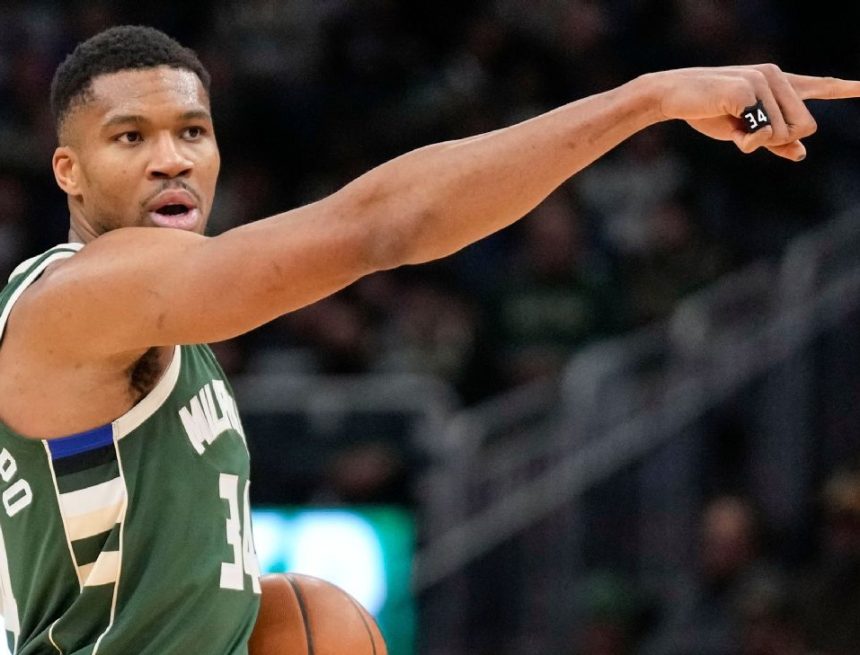PHILADELPHIA — Saquon Barkley sat on a foam mat in the middle of the Eagles’ locker room following their 21-17 loss to the Denver Broncos Sunday with anti-inflammatory belts strapped around his legs.
A return trip to the Meadowlands for Thursday night’s game against his former team, the New York Giants, was just days away, and Barkley was one of a handful of Eagles players getting a jump on rapid recovery to account for the short week.
The turnaround has been extra tricky for the 28-year old Barkley, who exited the Broncos game with a sore knee that landed him on the injury report. He is still expected to play against the team that drafted him No. 2 overall in 2018 and ultimately let him walk in the 2024 offseason — a move that had a seismic impact on the entire league.
It’s been an obstacle-filled start for the reigning Offensive Player of the Year following a dream campaign in which he set a new NFL record for rushing yards, including playoffs, and served as the jet pack for an Eagles team that won 16 of its last 17 games to capture its second Lombardi Trophy.
Barkley ranks 25th in rush yards per game (53.4) and 39th in yards per rush (3.2). Outside of his injury-shortened 2020 season, his 1.9 yards before contact per rush, 1.3 yards after contact per rush and 3.2 yards per rush are all career-lows through his team’s first five games of a season.
With their primary method of attack from a year ago not functioning at its best, the 4-1 Eagles enter their NFC East matchup against the Giants still trying to figure out what kind of offense they are going to be. They’re searching for ways to unlock Barkley as he navigates extra attention from opposing defenses as well as attrition along the offensive line, and fights against a history that hasn’t always been kind to 2,000-yard backs.
“Every year is not going to be like how I had it last year,” Barkley said. “It shouldn’t be like that. Football is not easy, football’s hard. It’s a tough sport. You’re going up against a lot of talented players.
“It’s something you’ve got to love. Just as much as you love rushing for 200 yards and scoring three touchdowns, you have to enjoy your process even when things aren’t going the way you want them to go. You go back to your process and you let those things take over and eventually, it’s going to turn.”
Barkley’s confidants — a group that includes Eagles coaches, mentors and Hall of Fame backs like Marshall Faulk and Edgerrin James — all had the same message for him coming off his high-volume Super Bowl season.
“Everyone I trust told me basically to sit my ass down for a little bit,” Barkley said this offseason.
That meant resisting the urge to spring into action every time a clip of Derrick Henry running hills or Christian McCaffrey working out came across his timeline like he would in the past.
Barkley’s workload was no joke in ’24. He finished the regular season with a league-high 345 carries — 50 more than his previous high of 295 set in ’22 — and ran it 91 more times in the postseason.
“Maybe ‘take it easy’ isn’t a term I would use but your training plan has to change,” said running backs coach Jemal Singleton. “[When you go to the Super Bowl] everything gets pushed back and when it gets pushed back it’s butting up right into training camp.
“So part of that is, ‘Hey, let’s be smart. You just played 21 games. You just had a bunch of carries, played a bunch of reps, let’s make sure that physically you’re building yourself slowly into it.”
The year-after numbers for the select group of backs who have hit the 2,000-yard rushing mark are telling: none reached 1,500 yards the next season, and the previous eight saw their yards per rush drop by an average of about a yard and a half — Barkley’s has dropped by 2.6 at this point.
Now in his eighth NFL season, Barkley is working against the odds on multiple fronts when it comes to running back production.
“Well, the challenge is you’re not 21 years old,” said former Eagles running back standout Brian Westbrook, who racked up over 10,000 all-purpose yards over his nine-year career and was a part of five different playoff runs, including Philadelphia’s Super Bowl appearance during the ’04 season. “Every year, it takes a bit longer for your body to respond.”
“And when you put the 2,000 yards on top of that and a long run deep into the playoffs on top of that, that’s an extra month-and-a-half of football. That takes a toll on you and it’s harder to come back from that as you get older. I can imagine he’s not quite the same but no one is. It’s hard to get better as you get past year six, seven and eight, not a lot of running backs in particular do that. Saquon has already passed the test of time having the great season he had last year.”
The wear and tear can “make your legs a little bit heavier, not as quick in and out of your cuts,” but the film doesn’t suggest that’s happening with Barkley right now, Westbrook said.
Instead, the root of the issue is a combination of injuries along the offensive front and defenses finding new and improved ways to slow the Eagles’ ground game.
Center Cam Jurgens is coming off back surgery. Left guard Landon Dickerson had meniscus surgery on his right knee in August and exited last week’s game against the Broncos with an injured ankle. Right tackle Lane Johnson has missed parts of two games with a stinger.
Last year, the Eagles’ offensive line helped Barkley average a league-high 4.2 yards before contact per rush. This year, that number is down to 1.9, which ranks 28th out of 42 qualified backs.
“I think we’re used to, based on the last three to four years, to just assume the Eagles’ offensive line is the best in the league which they have been, but they have not played to that level this year,” said NFL analyst and senior producer at NFL Films Greg Cosell. “And one can even argue they’ve played at a level that’s probably the lower half of the league as opposed to the upper half of the league.
“And I think Barkley has always been the kind of runner even going back to his Penn State days that when it’s not clean at the point of attack at the first level that he tends to be a searcher and a looker. So there are plays on tape where you can see that he leaves yards on the field because instead of just taking what’s there, which might only be a three or four yard gain, he then is looking for the big play which happened last year just as a matter of course so many times.”
Making matters worse, Barkley is facing eight-plus-man boxes on 30.1% of his runs, per NFL Next Gen Stats, up from 20.6% last season.
“That’s going to be the theme for this year. You’d be a fool to let us walk into whatever stadium…and your focal point is not on stopping the run,” Barkley said. “And if that’s the case, we’re going to burn you for it.”
The Eagles had the luxury in ’24 of salting games away on the ground in the second half. Barkley averaged a league-high 6.7 yards/rush in the second half last season while the Eagles designed rush percentage in the second half was a league-high 59%. This year, he is averaging 2.6 yards/rush in the second half (40th out of 44 qualified players), while the Eagles designed rush percentage is down to 46%.
The Eagles have seen teams come back on them late in games each of the past two weeks, including a Denver team that scored 18 points in the fourth quarter to give Philadelphia its first loss of the season.
One thing the Broncos game showcased was Barkley’s chops as a receiver. He got loose on a wheel route early in the third quarter and hauled in a deep pass from Jalen Hurts for a 47-yard touchdown.
“I think that’s something that we can continue to expand on, especially with a lot of teams focusing on the run game,” Barkley said. “I feel like I am a mismatch against linebackers, but we have so many talented players here.”
The Eagles really tried to get the passing game going last week amid growing frustrations from A.J. Brown and the receiving corps. The flip side was Barkley carried the ball just six times, his lowest total since 2021.
That’s a departure from the formula that worked so well for the Eagles last season and not how they want to operate going forward.
Barkley is on record as saying he wants to go down as the “best of all time.” Becoming the first player to rush for 2,000 yards in back-to-back seasons would certainly elevate him into the conversation. But just as he stopped his pursuit of Eric Dickerson’s regular-season rushing record last season in the name of trying to win a Super Bowl, he’s more concerned with landing on the recipe that will equal the most team success — something Philadelphia will continue to seek this week at MetLife Stadium.
“I’m not in the business of, ‘What, are we doing enough?'” he said. “I’m in the business of winning football games.”


